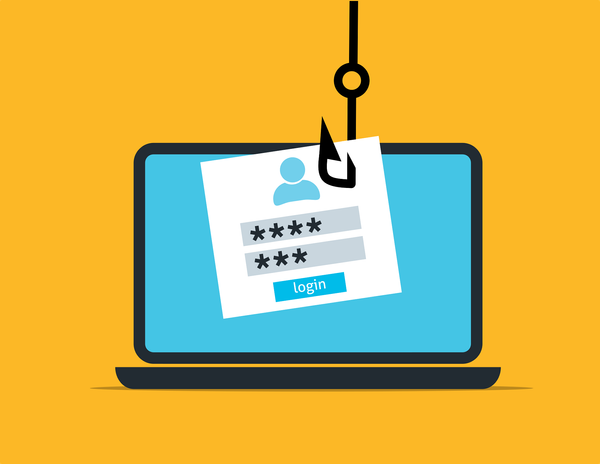Skyfall Scams: Navigating the Turbulence of Fake Airline Help on Social Media

The ever-evolving nature of social media has significantly shifted the customer service framework. Real-time engagement for customers seeking immediate resolution of service-related issues has set new benchmarks for responsiveness and direct communication.
However, the convenience of digital advancements has also paved the way for sophisticated scams, particularly on social media platforms like X (formerly Twitter). In this guide, we delve into the alarming trend of fake airline customer service accounts—fraudulent profiles expertly mimicking official airline support to deceive and exploit travelers.
Understanding the Scam
In this scenario, threat actors exploit the urgency and frustration of travelers facing issues with their bookings or other problems with an airline. Perpetrators mimic the social media profiles of well-known airlines to create seemingly legitimate accounts that can be difficult to tell apart from genuine ones.
The more resourceful ones even pay for blue verification ticks to appear authentic, deepening the illusion of legitimacy to mislead even the most vigilant of users.
The Mechanism of the Scam
In the intricate, often unpredictable, realm of digital interactions, the mechanism of fake airline help scams operates with cunning and precision to deceive. Con artists meticulously craft rogue social media personas that mimic legitimate airline customer service accounts, making them almost indistinguishable to the untrained eye.
These fraud profiles serve as bait, luring unsuspecting travelers into a ruthless trap under the guise of help. This section unfolds the layers of these deceitful tactics, revealing the devious strategies threat actors may employ against unsuspecting victims, exploiting real-time communications to foster trust, extract sensitive information, and set the stage for identity theft and financial fraud.
- Initial Contact: Threat actors use bots to automate social media monitoring, scraping for keywords like “delayed,” “canceled,” or even direct mentions of airline account handles. After identifying valid results, scammers quickly respond to matching posts, often before the real airline accounts can.
- Building Trust: Con artists use scripted, customer-friendly language, apologizing for any inconveniences, and suggest escalating the issue by moving the conversation to private messaging platforms, such as WhatsApp or X’s proprietary direct messaging (DM) section.
- Phishing for Information: Once they persuade their victim to continue the conversation privately, threat actors request sensitive information such as booking details, credit card information, or login credentials. Alternatively, they may direct the victim to malicious websites under the guise of resolving their issues, only to steal personal and financial data. To feign legitimacy, they often ask victims for flight-relevant information, such as booking references or flight numbers.
Tips for Detection and Prevention
Considering scammers’ ever-evolving strategies for deceit, vigilance is paramount. Detecting and preventing fake airline customer service scams is about more than just recognizing the threat; robust preventive measures are equally important.
This section aims to provide practical strategies and keen insights to empower travelers. By understanding the subtle red flags and integrating a proactive approach to verifications, users can significantly boost their defenses against cyber thieves' cunning maneuvers, ensuring the integrity of their digital safety.
- Verify Directly with the Airline: Cross-referencing communications through official channels is one of the most important ways to detect this type of scam. Visit the airline’s official website or use verified contact numbers to get in touch with the company’s support team rather than relying solely on social media interactions.
- Look Beyond the Blue Tick: Scammers frequently acquire blue verification ticks to make their rogue accounts appear legitimate. To verify the legitimacy of an account, also look for other indicators, including the number of followers, the account’s age, and the presence of a gold verification tick that some entities use for an added layer of trust.
- Be Skeptical: If the person who contacted you urges you to hand out private information, visit a specific website, or install something on your device, it may indicate a scam. Legitimate airline representatives don’t routinely ask for sensitive information through social media. Never give sensitive data such as passwords or credit card information.
- Check the Account’s History: Legitimate airline customer support accounts have long-standing records of interactions and official communications. Always check how long the account has been active and browse through its posting history.
- Use Anti-Scam Software: Advanced scam detection tools like Scamio can help you identify and protect against these digital intrusions. Scamio analyzes texts, links, images, and QR codes you might find suspicious. It’s available for free via web browsers, WhatsApp and Facebook Messenger, making it a convenient aid in the fight against scams. Describe the scam or upload an image or link and Scamio will analyze the information, providing quick feedback on whether it's a scam. This tool is particularly useful in identifying sophisticated scams that might not be immediately obvious, leveraging Bitdefender’s advanced threat detection technologies.
Echoes From the Crypto Realm
This method bears a striking resemblance to earlier scams in the cryptocurrency realm. In both cases, threat actors would weaponize social media by creating phony accounts, then contacting potential victims through replies, offering help or compensation.
In this situation, perpetrators would look for crypto investors posting about problems with transactions, wallets, exchange platforms, or, ironically, even scammers. Threat actors would then use a fake account mimicking an official one to reply to the victim’s post, apologizing for any inconvenience and offering to resolve the issue.
After persuading the victim to move the conversation to a more private environment, such as Telegram or WhatsApp, the con artist would then ask for the victim’s wallet’s private key for identity verification purposes.
Within minutes of sharing the private key, the victim’s wallet would be drained of its crypto assets, the investments stolen by the scammer who vanishes into the digital ether.
Historical Context and Industry Impact
The frequency of these scams reflects broader trends in cybercrime, where scammers perpetually adapt their strategies to new and emerging technologies. Airlines and social media continually develop countermeasures, but the reactive nature of these solutions often places them a step behind cyber crooks.
Conclusion
The persistent issue of fake airline customer service accounts on social media platforms is daunting when it comes to maintaining trust and security online. Combating these scams takes a lot of effort as well as a balance of awareness, education, and proactive measures.
By understanding the plethora of tactics employed by these perpetrators and taking the proper steps to verify the legitimacy of online interactions, consumers can protect themselves from potential harm.
FAQ
- Are there fake airline websites?
Yes, fake airline websites are increasingly common among scammers. They lure their victims to these fraudulent websites through incredibly low-priced tickets. The websites may look legitimate, often using URLs that closely mimic those of real airlines. Victims who enter payment information on these websites frequently lose the money paid on the fictitious booking. Frequent giveaways for fake airline websites include poor grammar, unusual URLs, and prices that are too good to be true.
- How to know a fake travel agent?
Fake travel agents often lure customers with offers of free or highly discounted vacation packages. The legitimacy of a travel agency can be quickly determined by asking for its IATA-accredited unique code and verifying it on IATA’s official website. Always be wary of high-pressure sales tactics, requests for payment via unconventional methods (wire transfers, crypto), and lack of detailed information about the packages being offered. Legitimate agencies will have clear contact information, provide detailed terms, and won’t pressure you into making rash decisions.
- How to detect an airline customer support scam account?
Airline customer support scam accounts often spawn during online interactions, especially on social media platforms such as X. To determine if an account is legitimate, verify whether it uses the official account’s correct username and branding by cross-checking with the airline’s actual website. Always be wary of accounts that respond too quickly to your queries, especially if they offer to resolve the issue through private channels or direct messaging. Official airline customer support agents will rarely, if ever, ask for sensitive personal details over social media.
tags
Author

Vlad's love for technology and writing created rich soil for his interest in cybersecurity to sprout into a full-on passion. Before becoming a Security Analyst, he covered tech and security topics.
View all postsRight now Top posts
How to Protect Your WhatsApp from Hackers and Scammers – 8 Key Settings and Best Practices
April 03, 2025
Outpacing Cyberthreats: Bitdefender Together with Scuderia Ferrari HP in 2025
March 12, 2025
Streamjacking Scams On YouTube Leverage CS2 Pro Player Championships to Defraud Gamers
February 20, 2025
How to Identify and Protect Yourself from Gaming Laptop Scams
February 11, 2025
FOLLOW US ON SOCIAL MEDIA
You might also like
Bookmarks








